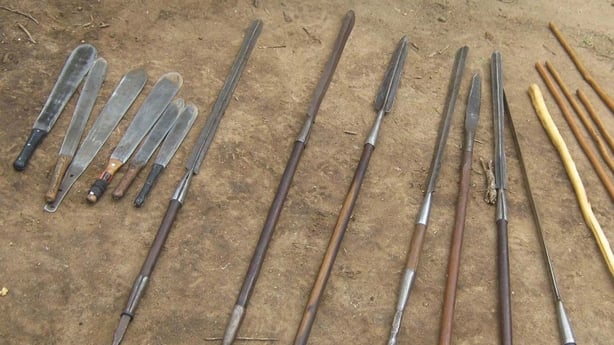The Maasai herders in Amboseli in southern Kenya are fed up.
Over the last three years, they have struggled to find water and pasture for their cattle and goats, losing thousands to the worst drought in over 40 years.
Now, they face another threat: lions and other predators from the surrounding national parks venturing into their settlements.
These predators are targeting the remaining livestock, the lifelines of many living in the area.
Last month, this came to a head when a pride of young lions broke into an animal enclosure, killing 11 goats and a dog.
Predicting the fallout from the community, a group of rangers moved the lions to The Big Life Foundation compound.
But it was too late. Angry at the loss of even more animals, the news of where the lions were being held spread, and an angry mob gathered at the gates, armed with long spears and demanding access to the predators.
Despite the best efforts of the Big Life rangers, the Kenya Wildlife Service, and the police, six lions were killed after the herders eventually entered the compound.

Samuel Kaani works for Big Life, an organisation that protects wildlife and their habitats.
"Those lions were small. They were young lions that were very hungry. They were not conscious of matters of human-wildlife conflict. They fell victim to being killed very easily," Mr Kaani told RTÉ News.
While heartbroken over the loss of life, he can empathise with the community.
"Before, you could find someone with 200 cows, and today they are left with only 20 cows. So those that have remained, if it gets eaten by a lion, you feel a lot of pain," he said.
Ten lions were killed last month, including the oldest lion in Kenya, 19-year-old Loonkiito.
The conflict between humans and wildlife is not new. However, with shorter rainy seasons, the problem has been exacerbated.
One of the solutions that Big Life has implemented is a compensation programme for those that have lost their animals to lions and other predators.

They have also introduced a number of programmes to the community, including scholarships, to help build a relationship with the community and to reduce lion killings.
These, however, have been paused.
"Sometimes, the government or the police, when they just come and catch the perpetrators so quickly without the community even knowing, the people in the community will not feel the repercussions of it," Mr Kaani said.
He added that, because they had paused their benefits, the community was holding a meeting to identify those responsible for the killings to face punishment.
This, Mr Kaani said, meant that everyone in the community will feel the pain - and realise that mistakes have been made.
It is a tough lesson for those in the area.
Joshua Ngarunga, of the Maasai community, said that those in the community are looking for other ways to deal with the problem. He said that the programmes are helping to change people's minds.
For the Maasai, killing lions is part of their culture, a way to mark the transition of boy to man.

While there has been some improvement, instances like this show that there is still conflict between humans and wildlife.
Due to climate change, this is expected to continue as more wild animals travel into populated areas in search of food and water.
Big Life and the Kenya Wildlife Service are striving to find other solutions, so that humans can sustainably live alongside animals.
This will require not just a compensation programme, but properly integrating organisations like Big Life within the community.
Samar Ntalamia, the director of the education programme at Big Life, believes this is key.
"If Big Life was only to focus on protecting wildlife and habitat, we would have a thriving wildlife species, which would mean more problems for local communities."
He said that, instead, Big Life was working to generate economic benefits from their wildlife conservation efforts for the local communities.







